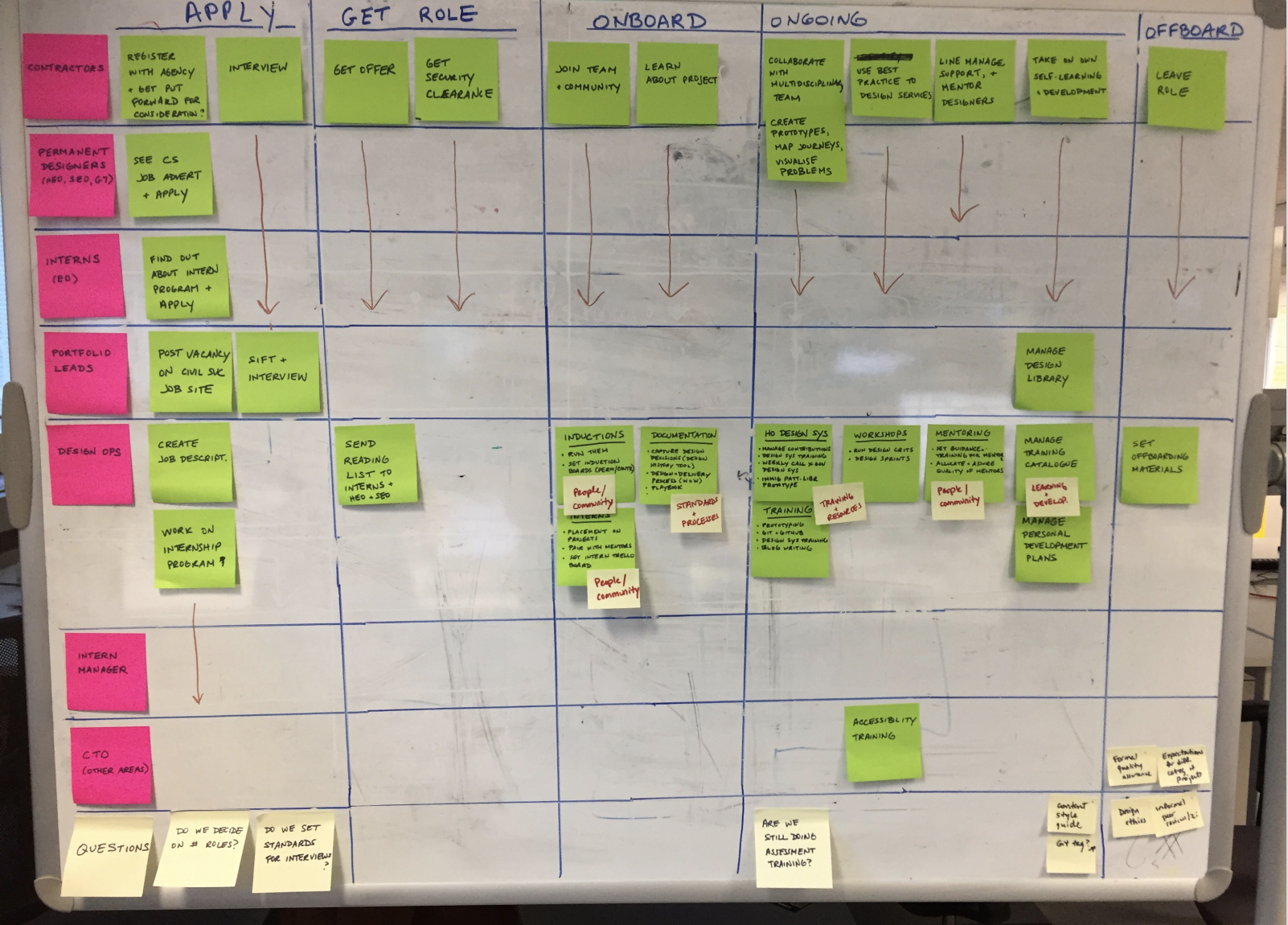Building a design community in government
Home Office
February 2019 - June 2021
As DesignOps lead, I worked in many ways to build up the design community and bring them together.
 Mapping out key areas where designers could be supported, from applying to leaving the organisation.
Mapping out key areas where designers could be supported, from applying to leaving the organisation.
The challenges
The Home Office is one of the largest ministerial departments in UK government responsible for immigration, security, law and order. Some of the main challenges we faced in DesignOps (Design Operations) was how we:
- go about building the design community
- maintain consistency to good government design standards and best practice
- manage and unify the growing community that's spread out across various locations in the UK.
Building the community
As an interaction design lead in DesignOps, I worked closely with a content design co-lead to support various recruitment campaigns including the Home Office Career Development Programme, managed project placements of junior designers and discussed line management and mentoring responsibilities with more senior ones. I also developed and continually refined onboarding materials while conducting monthly inductions for new designers.
Maintaining consistency to good design and best practice
Promoting the Home Office design system was one way to give designers visibility on what design components and patterns should be used on their projects. The design system also served as a collaborative platform for sharing ideas and discussing common problems which could help contribute and feed into improving the design system itself.
We also ran regular design crits, facilitating and teaching others how it's done in government and sharing the benefits of collaborating with peers and the community; we wanted to arm designers with the tools they can continue to use within their own delivery teams.
 Preparing for a design crit with facilitators on my team.
Preparing for a design crit with facilitators on my team.Bringing the community together and empowering them
Developing a communities of practice was critical. We didn’t want to provide a top-down approach but instead, have designers share their passions in what they do and learn how to do it better by becoming regular practice leads (for example, in areas such as prototyping and design ethics) which could then be knowledge-shared with others.
Another key area of empowerment was developing a role standard for designers that highlighted different skill levels and expectations - from a junior to a senior level designer. These would become general guidelines for the community to help upskill and prepare them for applying for senior leadership roles.
Being transparent and open
To engage with the community and wider organisation and make our process transparent, I posted weekly design notes with my co-lead on what we and the UCD leadership have been doing. In addition, we've carried our knowledge sharing further with other government departments who are developing their own DesignOps function, so that we can learn from each other on how we help maintain our design communities together.
- DesignOps, UCD leadership, strategy development, community management